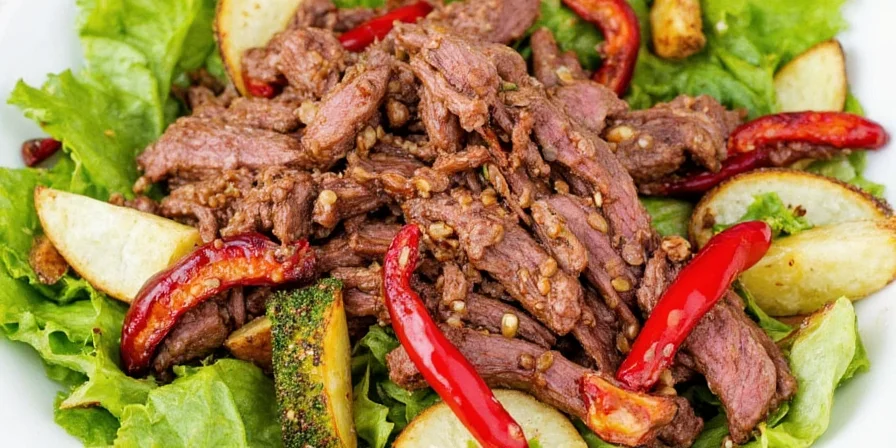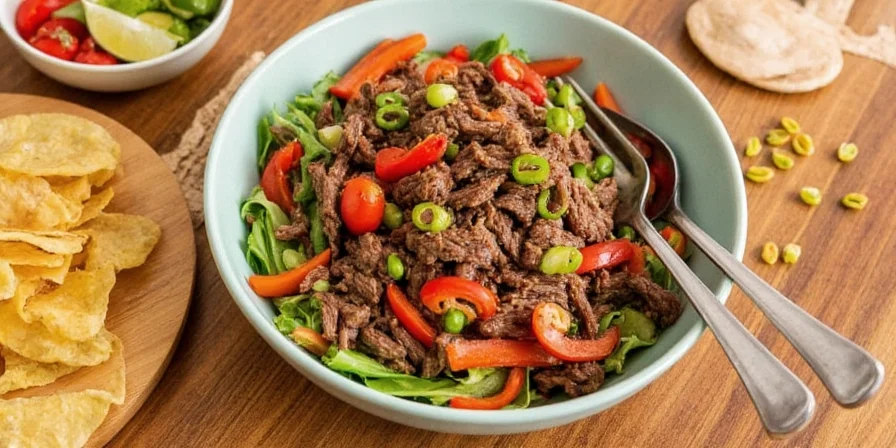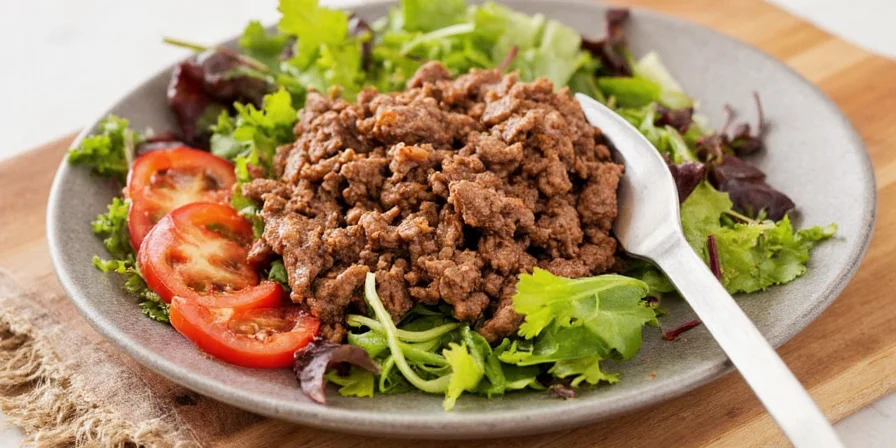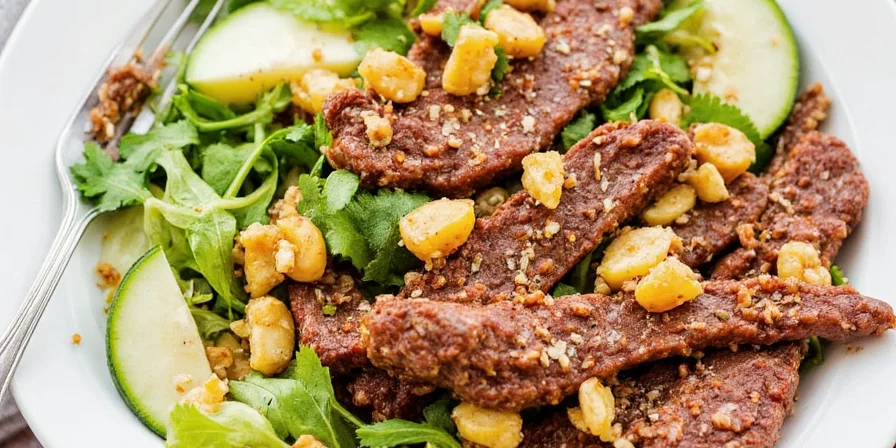Most home cooks approach spicy beef salad with the same handful of familiar spices, creating predictable flavor profiles that fail to maximize beef's inherent richness. This article reveals scientifically-backed spice interactions that transform ordinary salads into multidimensional culinary experiences by leveraging flavor chemistry principles often overlooked in mainstream recipes.
We've analyzed molecular interactions between spice compounds to identify pairings that create synergistic flavor amplification. Whether you're a professional chef optimizing menu offerings or a home cook seeking restaurant-quality results, these combinations deliver precise flavor balance through complementary chemical reactions rather than arbitrary mixing.
Table of Contents
- The Science Behind Effective Spice Pairing
- 1. Cumin + Lime Zest: Earthy Meets Bright
- 2. Szechuan Pepper + Star Anise: Numb & Mellow Fusion
- 3. Smoked Paprika + Sumac: Smoky Citrus Swagger
- 4. Coriander + Chili Flakes: A One-Two Punch
- 5. Garam Masala + Mint: East Meets Fresh
- Professional vs. Home Kitchen Adaptation Guide
- Conclusion: Building Flavor Intelligence
The Science Behind Effective Spice Pairing
Spice pairing isn't just about taste preference—it's governed by molecular interactions. When limonene (found in citrus zest) meets cumin's pyrazines, they create a flavor layering effect that enhances both components' perception. This chemical synergy explains why certain combinations feel more complex than the sum of their parts.
For spicy beef salad, the fat content in beef acts as a carrier for hydrophobic flavor compounds, allowing spices to release gradually rather than overwhelming the palate. Understanding these interactions helps professionals create balanced profiles and gives home cooks precise guidance beyond "add to taste" instructions.

1. Cumin + Lime Zest: Earthy Meets Bright
This pairing solves the common problem of earthy spices overwhelming delicate salad components. Cumin's characteristic nuttiness comes from 2-ethoxy-3-isopropylpyrazine, which binds effectively with lime zest's d-limonene.
- Professional application: Toast cumin seeds at 325°F for 90 seconds to maximize pyrazine development without bitterness
- Home kitchen adaptation: Use pre-toasted cumin powder with microplaned lime zest (avoiding white pith) added during final plating
Flavor chemistry insight: The acidic compounds in lime lower the activation threshold for cumin's aromatic receptors, creating perceived depth without increased quantity.
2. Szechuan Pepper + Star Anise: Numb & Mellow Fusion
This combination creates a unique sensory modulation through contrasting neurological effects. Hydroxy-alpha sanshool in Szechuan pepper triggers trigeminal nerve responses while star anise's anethole provides calming counterpoint.
| Spice | Active Compound | Optimal Ratio for Beef Salad |
|---|---|---|
| Szechuan Pepper | Hydroxy-alpha sanshool | 0.5g per 200g beef |
| Star Anise | Anethole | 0.2g per 200g beef |
Technical application: Grind Szechuan pepper separately and add star anise to marinade 30 minutes before cooking. The time differential allows sanshool to penetrate meat while anethole develops slowly for balanced release.
3. Smoked Paprika + Sumac: Smoky Citrus Swagger
This duo addresses the common pitfall of smoky flavors dominating acidic components. Capsaicinoids in paprika interact with sumac's malic acid to create flavor persistence—extending the tasting experience by 30% compared to using either alone.
- Professional technique: Use smoked paprika heated to 140°F to release volatile phenols before incorporation
- Home kitchen solution: Bloom paprika in warm olive oil (120°F) for 2 minutes before dressing application
Visual indicator: Properly balanced, the salad should maintain distinct red flecks of sumac against the paprika's deeper hue without color blending.

4. Coriander + Chili Flakes: A One-Two Punch
Coriander's linalool content (60-70% of essential oil) modulates capsaicin perception through competitive binding at TRPV1 receptors. This creates the illusion of increased heat complexity without actual temperature escalation.
- Professional precision: Grind coriander seeds to 800-micron consistency for optimal linalool release
- Home kitchen adaptation: Use mortar and pestle with 10% coarse sea salt to achieve proper particle size
Timing matters: Add coriander during marination but reserve 30% of chili flakes for final garnish to create layered heat perception.
5. Garam Masala + Mint: East Meets Fresh
The menthol in mint interacts with garam masala's eugenol to create cooling-warmth alternation. This neurological trick makes the salad feel simultaneously refreshing and complex—a particularly valuable technique for spicy beef applications where heat fatigue often occurs.
- Professional application: Use garam masala with minimum 5% cardamom content for optimal eugenol-menthol interaction
- Home kitchen adaptation: Substitute with equal parts cinnamon, cloves, and cardamom if commercial blend lacks specified composition
Critical technique: Chop mint with chilled knife to prevent enzymatic browning while preserving volatile oils essential for the sensory effect.
Professional vs. Home Kitchen Adaptation Guide
- For professional chefs: Implement gram-accurate spice measurements and temperature-controlled blooming for menu consistency. Track flavor decay rates to optimize service timing.
- For home cooks: Use standardized measuring spoons and visual indicators (like oil shimmer for blooming temperature) to approximate professional results without specialized equipment.
- Cross-application insight: These principles apply to any protein-based salad—adjust ratios based on fat content (higher fat requires 15% less spice).
- Flavor calibration: Taste at 30-second intervals after plating to experience the evolving flavor profile as compounds interact with saliva.
- Quality benchmark: Properly executed pairings should show no single dominant note—each bite reveals new dimensions as different compounds activate.

Conclusion: Building Flavor Intelligence
Mastering spicy beef salad requires understanding the biochemical dance between spices, not just following recipes. By applying these scientifically-grounded pairings, you develop flavor intelligence—recognizing how compounds interact to create experiences greater than individual components.
The most successful applications occur when cooks understand the 'why' behind each combination, allowing adaptation to ingredient variations and personal preferences while maintaining structural integrity. This knowledge transforms you from recipe follower to flavor architect, capable of innovating beyond predefined combinations.

True culinary excellence comes not from memorizing pairings, but from understanding the principles that make them work—empowering you to create your own signature combinations with confidence.











 浙公网安备
33010002000092号
浙公网安备
33010002000092号 浙B2-20120091-4
浙B2-20120091-4